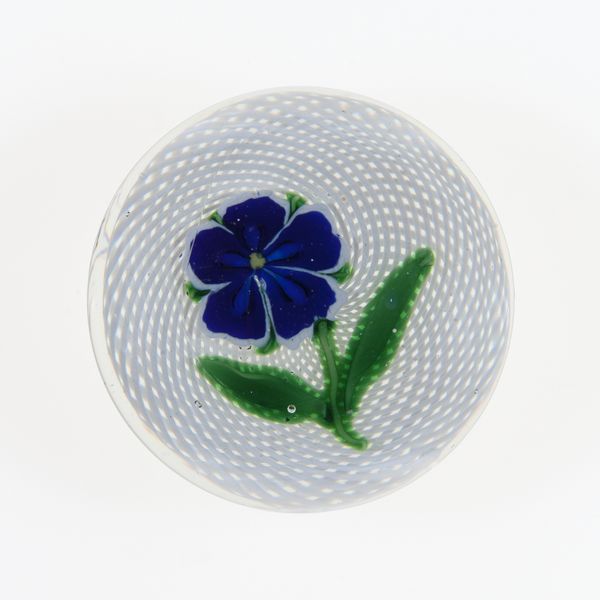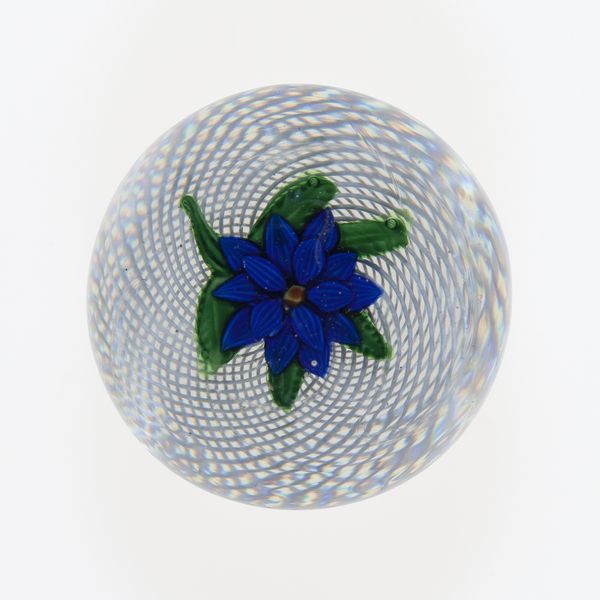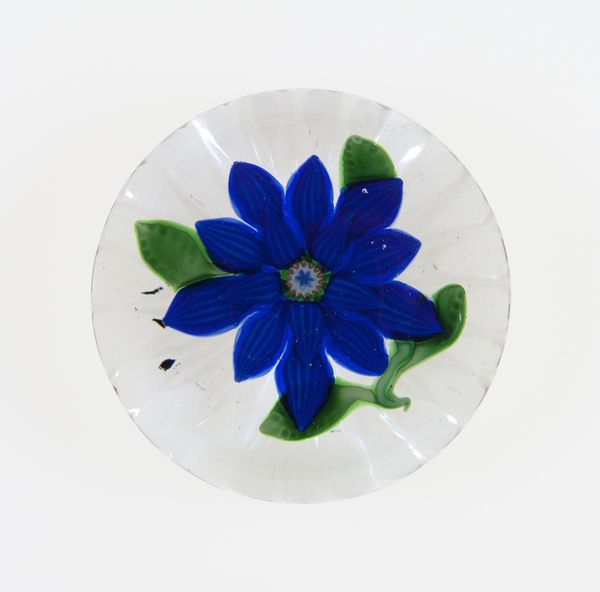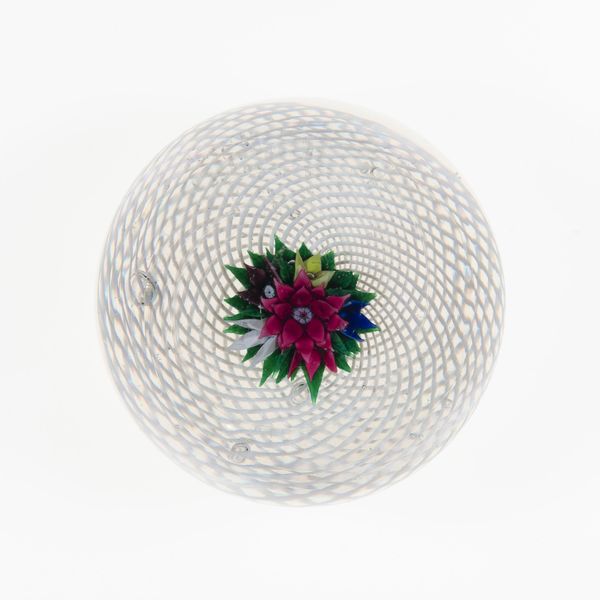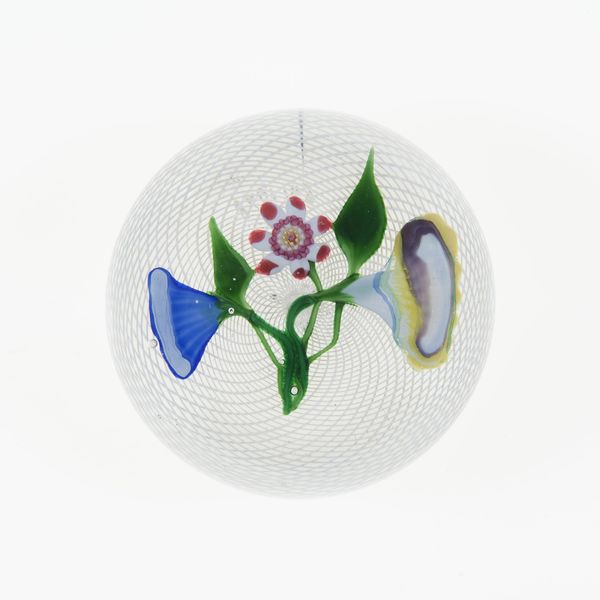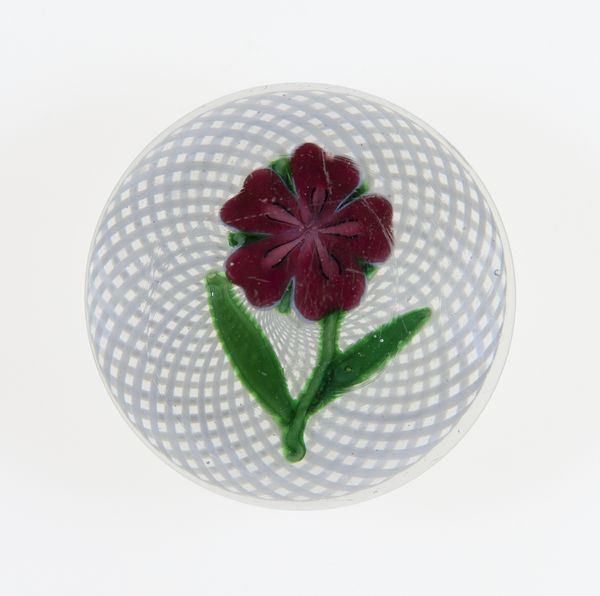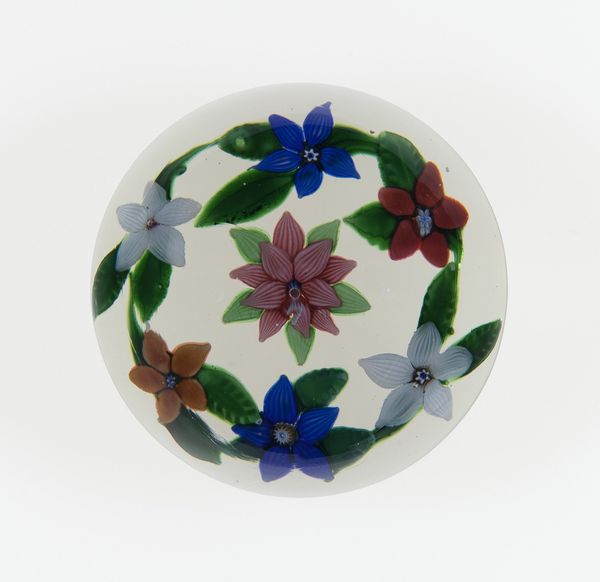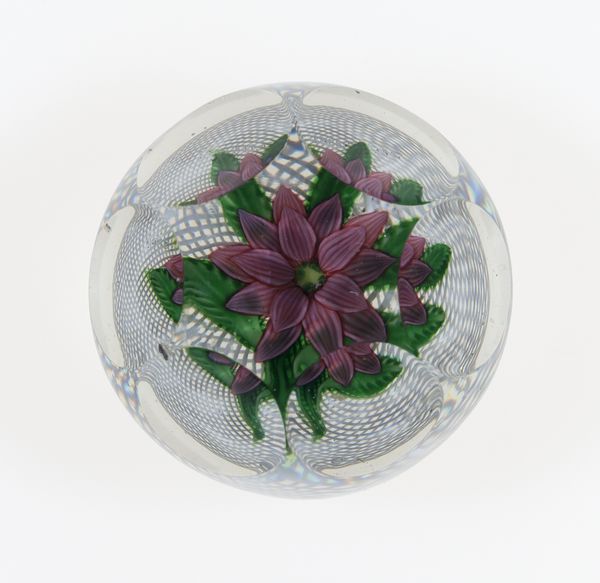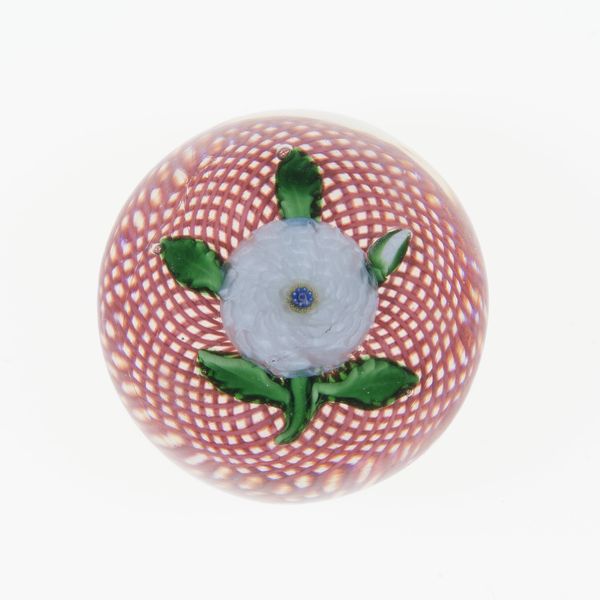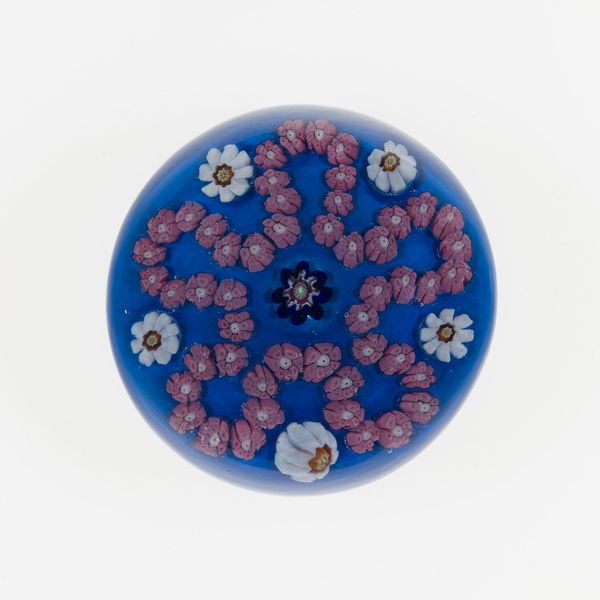
paper, glass
16_19th-century
paper
glass
france
decorative-art
Dimensions: Diam. 7.6 cm (3 in.)
Copyright: Public Domain
Curator: This is a paperweight crafted sometime between 1845 and 1860 by the Compagnie de Saint Louis. The piece consists primarily of glass and likely includes paper elements in its decorative motifs. It's currently housed at The Art Institute of Chicago. Editor: It strikes me as both incredibly delicate and surprisingly bold. The blue of the central flower just pops against that swirling white latticework. There's an almost surreal, encapsulated quality to it. Curator: It is evocative. Glass paperweights like this one gained popularity as decorative objects, especially during the Victorian era in Europe. Their functionality was almost secondary to their role as symbols of status and taste. Editor: I wonder about the cultural fascination with containing and preserving nature, or representations of nature, within domestic objects. Was it a way of domesticating the wild, reflecting a colonial mindset perhaps? Or perhaps a desire for control amid societal upheaval? Curator: Absolutely. The rise of industrialization in Europe brought about social changes, and these paperweights could be seen as a means of creating a contained, beautiful microcosm in a rapidly changing world. Think about the access to new colors and glassblowing techniques at this time as well! The Saint Louis company excelled at these complex designs. Editor: That internal landscape also reminds me of the role of women during this period; ornamental, and contained, expected to reflect a particular kind of domestic beauty. Are the flowers meant to suggest submission? A gentle ornamental trap? Curator: That’s insightful. I would consider it also as offering a means of escape—a way to look inward, to have some amount of control in a world where options were limited. Editor: It's compelling how a seemingly simple object like a paperweight can unlock so many conversations about gender, class, and the industrial revolution. I never expected such depth! Curator: Indeed, engaging with these artifacts helps to reflect on social power structures within design, shedding light on various facets of European society. Editor: Thank you, I have some thoughts for my own desktop now. Curator: Perhaps its time we each get one!
Comments
No comments
Be the first to comment and join the conversation on the ultimate creative platform.

